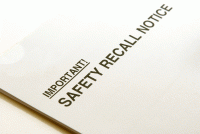Developing a Product Recall Plan

An effective pro-active product recall plan can mean the difference between survival and the loss of the business you have worked hard to create and advance. When faced with a product recall a business faces both Direct and Indirect costs. It is easy to calculate direct costs such as wages for staff to redirect energies into management of a recall plan or the purchase price of air time and ads to notify the public of the product recall. However, it is the indirect costs associated with not having a product recall plan already formulated that could have the biggest impact on your companys survival.
Keys to a successful Product Recall Plan
1. Appoint a recall coordinator. Don’t wait until a product is recalled. Precious time and possibly your company’s reputation could be lost if you have to start from scratch before implementing your plan.
The recall coordinator must:
- document all actions and recall decisions in a master recall file
- form a recall committee
- organize a team within the company for preferential assistance
- have the power to make recall decisions on behalf of your company
- coordinate and manage the operation of your company’s product recall
- Update and inform management of all stages of the product recall.
2. Make sure your products are serialized or traceable.
3. Document and record your products through the entire life cycle. Serialization or marking the product, individually or by batch, makes this easier.
4. Develop an effective complaint management program. Essentials of a good program start a with standardized form that will capture important information from your customers and provide early detection of potential problems, which will minimize the impact of a recall.
A basic complaint file should contain the following:
- Contact information of the person who made the complaint
- Details of the product problem
- Identification of the specific product using batch number or serial number, if available
- Information on how the product was stored
- Purchase date of the product and location
- Details of the injury/illness allegedly caused by the product
5. Constantly evaluate customer complaints, warranty claims, test and inspection records, repair and service records, and product liability claims. If it is determined that you have an impaired product that must be removed from the market, you should create a distribution list that includes the following:
- Account or business name that received the recalled products
- Account or business address
- Contact names
- Contact email and phone number.
- Type of business or account (e.g., retailer, wholesale distributor, manufacturer).
- Amount of recalled product shipped to account, identifying batch and serial numbers, if possible
- Recalled products ship date(s)
- Amount of product consumed or sold by the account
- Amount of product returned
6. Measure the effectiveness of your recall. Your recall coordinator should be aware of effectiveness requirements by federal agencies that oversee recalls. It will be important to measure how many of your products are in the marketplace and how many have been returned so you can satisfy the particular requirement of the federal agency overseeing the recall.
7. Communicate effectively. Quick notification of customers, retailers, distributors, and regulatory agencies is key to reducing the impact associated with the presence of hazardous product on the market. However, incorrect/premature information can create unnecessary problems for your business. Make sure all communications are monitored by your recall coordinator and are accurate and presented in a professional manner.
Those that will require immediate notification are as follows:
- Regulatory agencies, such as FDA, CPSC, etc.
- Everyone in your distribution chain who potentially received the impaired products. This should be a written recall notice and should include confirmation of receipt of notice.
- Consumers should be notified by issuance of a press release that has been approved by the governing agency.
8. Give your full support to your recall coordinator. Remember that reducing the time factor reduces the possibility for bodily injury or property damage,which in turn reduces the possibility of a product liability claim.
9. Once the product has been recalled, you must determine if the products must be destroyed, reconditioned or used for another purpose other than human consumption.
10. Measure the recalls effectiveness following these steps:
- Double-check that all consignees have received the proper notification.
- Determine that all consignees have taken the correct actions.
- If less than 100% response from the consignees, then the product recall should be viewed as ineffective and your strategy should be reassessed.
Resources to Help You with a Recall
View the Product Recall Checklist and the Regulated Products Handbook on our site.
Other Resources:
Consumer Protection Safety Commission
Lectric Law Library Developing a Policy & Plan to Identity Detective Products and Undertake a Recall

